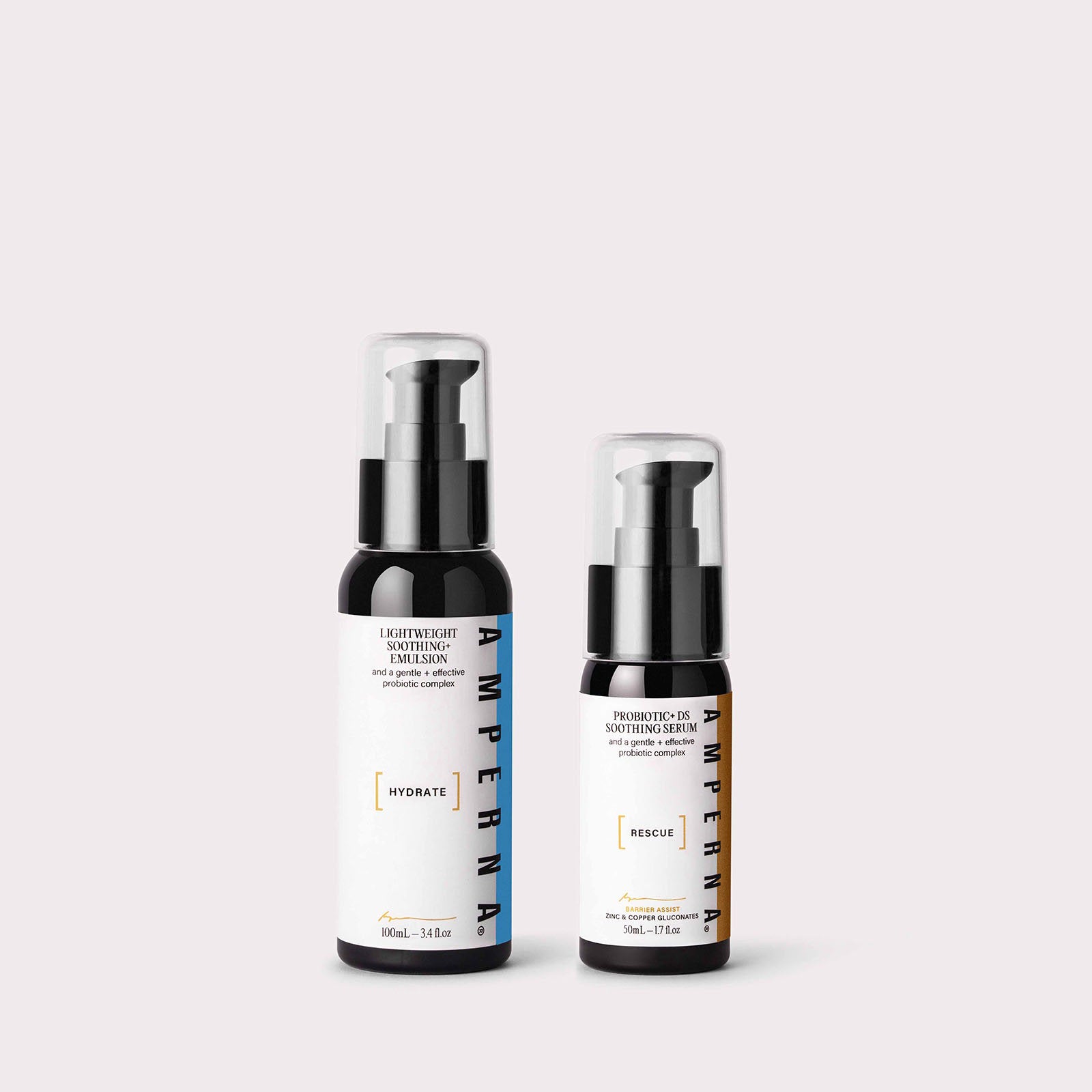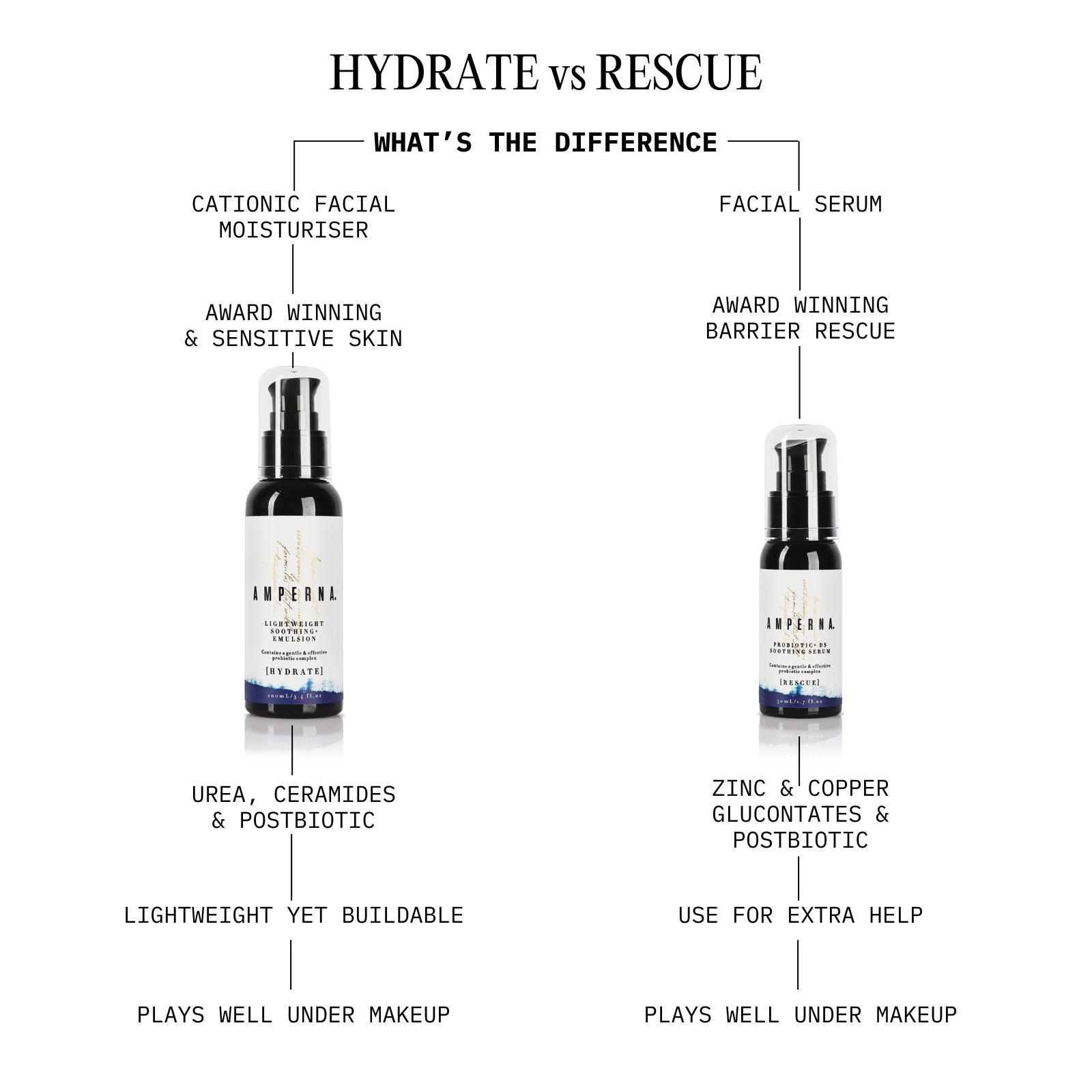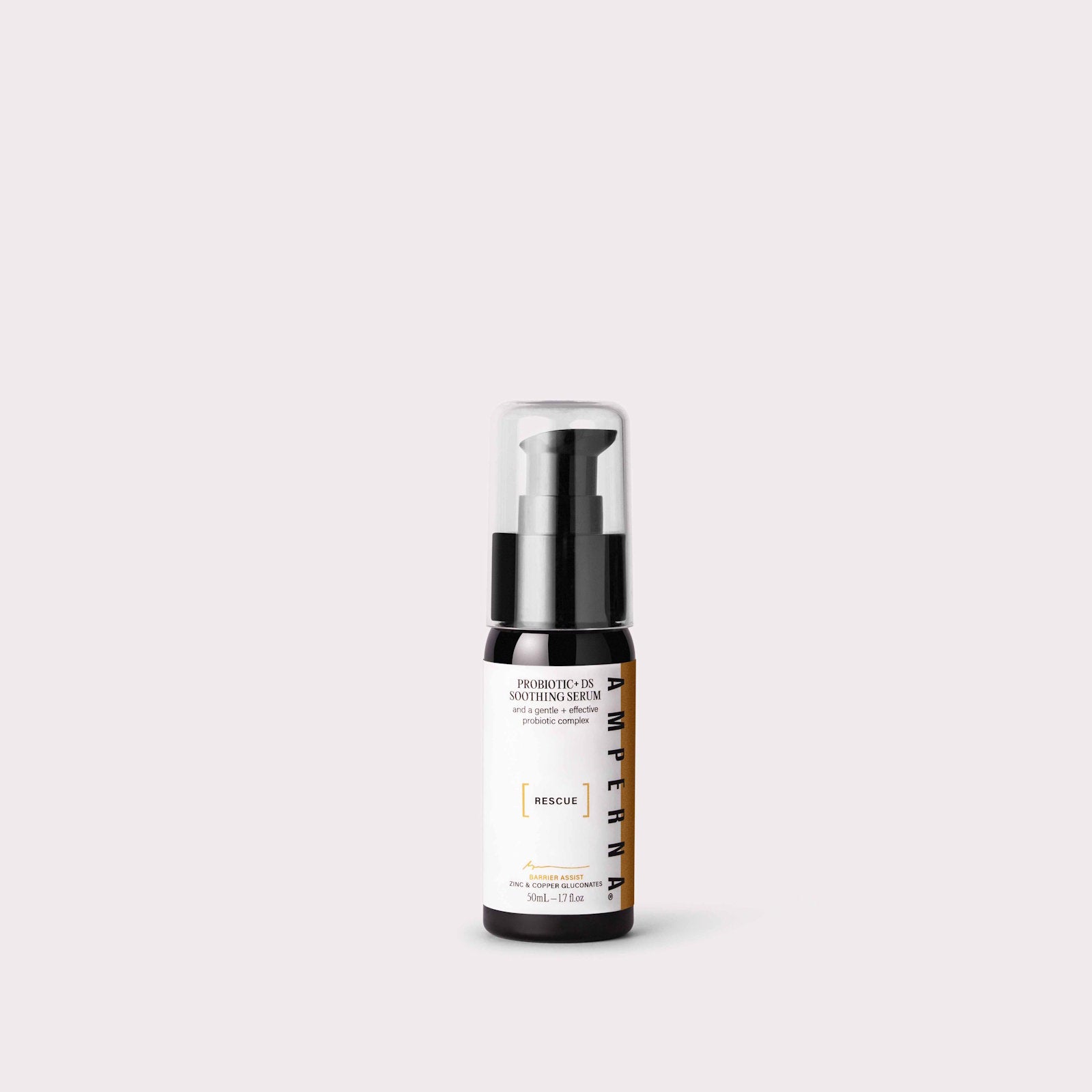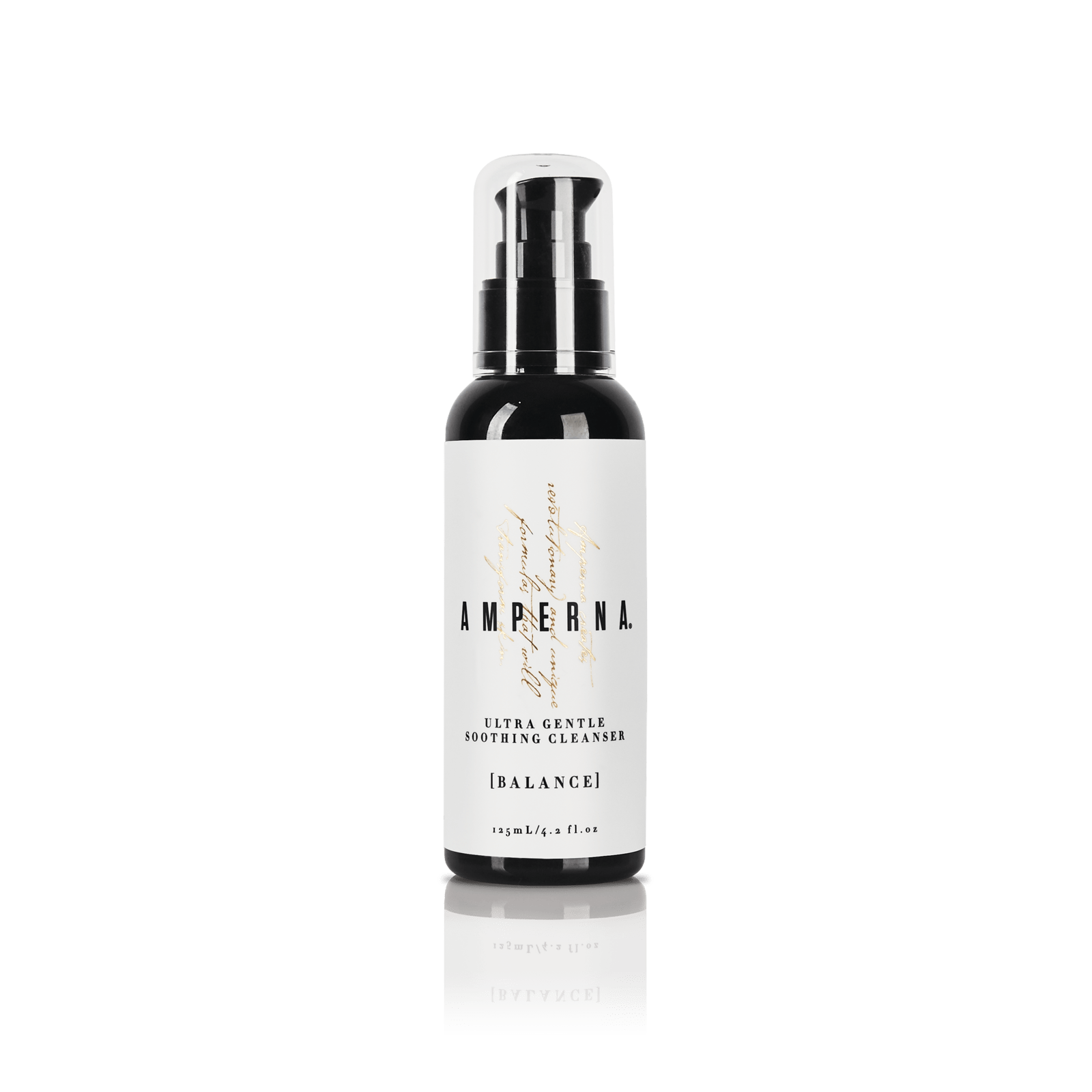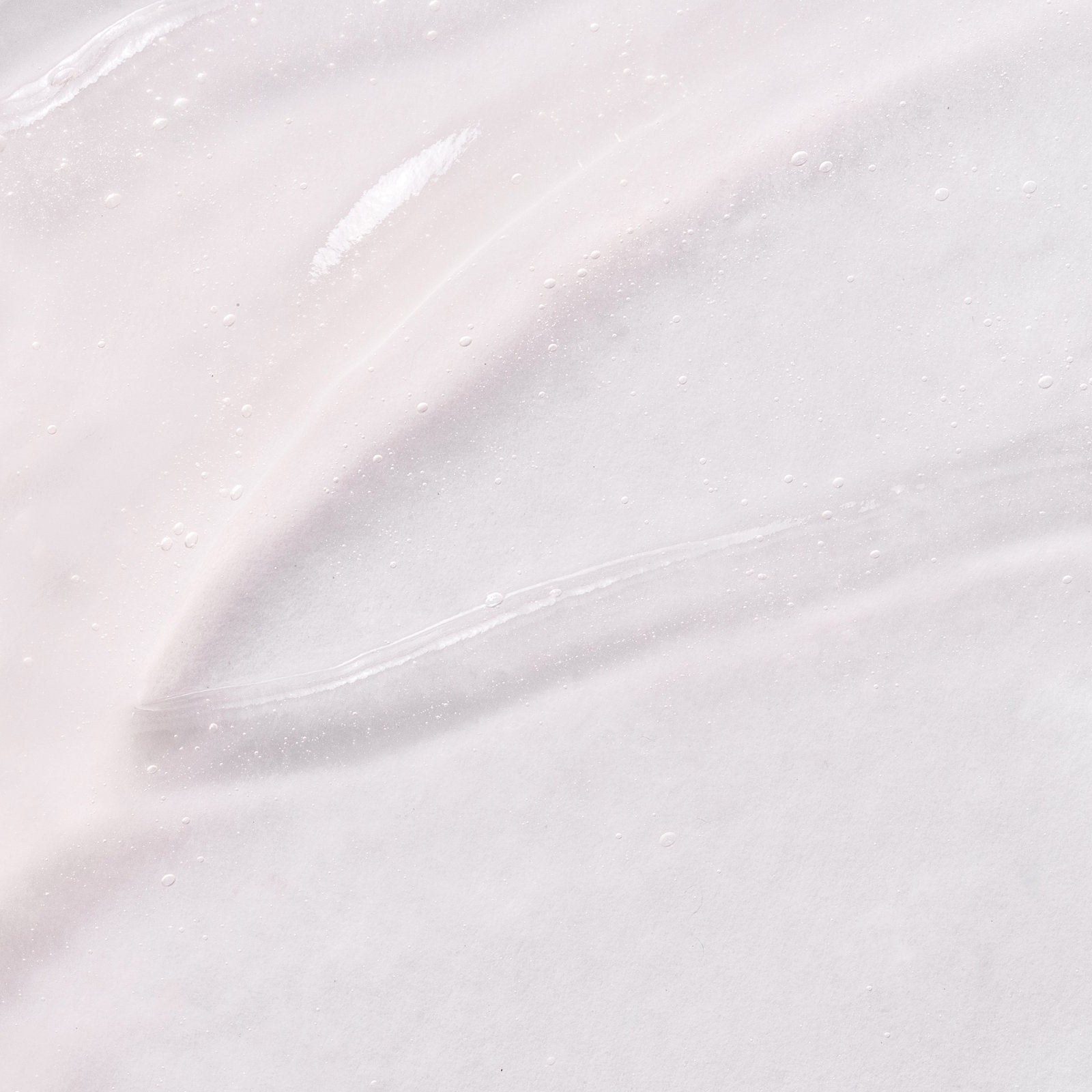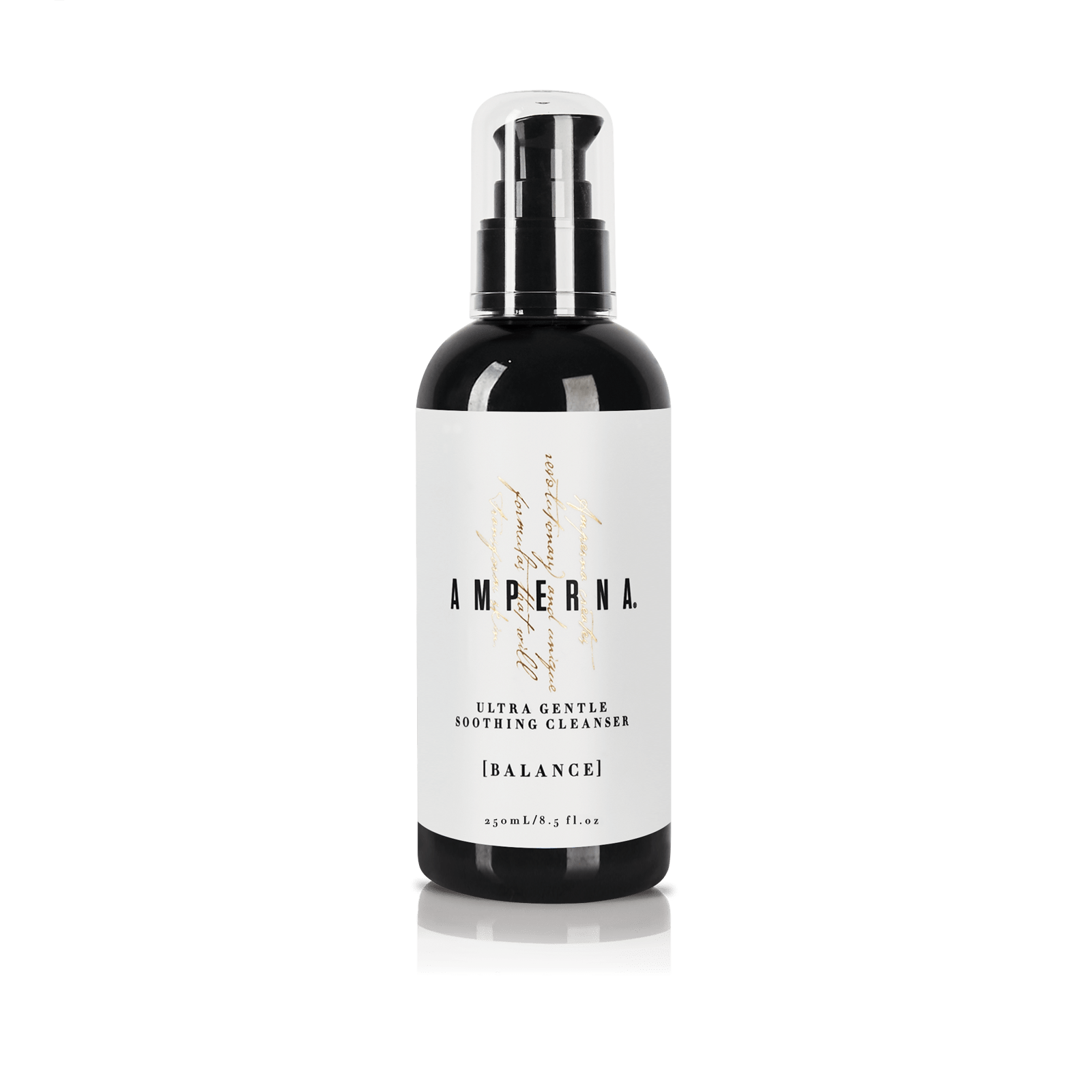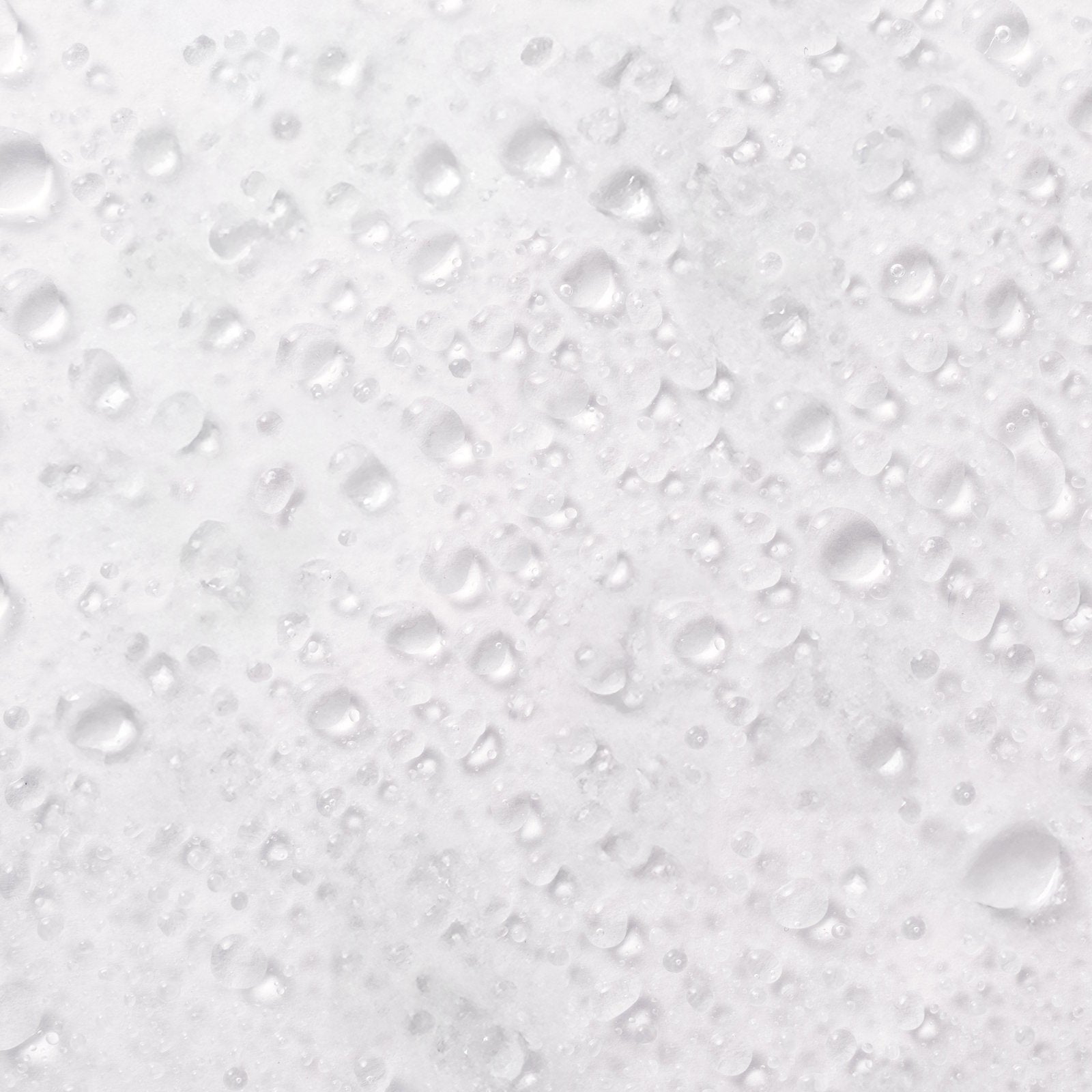When you Should Hydrate vs Moisturise
Dry and dehydrated skin are two very different things. They share very similar characteristics but are completely different skin concerns. Hydrating and moisturising your skin are also two very different things. Both serve your skin well and complement each other but they have separate outcomes.
So, the question is, do you have dry or dehydrated skin?
And what’s the difference between hydrating and moisturising to help your skin?
Let’s take a look at these differences to work out what’s the best approach to achieving healthy looking and feeling skin.

Dry Skin
Everybody is born with a skin type, classified as normal, dry, combination and oily. Dry skin lacks natural oils (sebum) resulting in a dull/dry looking complexion. If your skin is dry your skin barrier is most likely impaired. The moisture that would normally keep your skin feeling smooth and supple is escaping.
As we age or go through the different seasons/climates our skin type can also change. People may go from having normal/combination skin in summer but become dry during winter.
Signs you have dry skin include:
- Scaly, cracked skin
- Peeling or flaking
- Redness
- Irritation
Dry skin is sometimes associated with or can lead to skin concerns such as psoriasis and eczema. Dry skin may also be caused by underlining health conditions, such as hypothyroidism.

How to Treat Dry Skin?
The key to help combat dry skin is to moisturise, moisturise, moisturise.
Moisturising with the right products helps dry skin better retain water and replenish lost moisture in the skin. Rehydrating the top layer of the skin and sealing in moisture will help your skin feel and look smoother and more supple.
Look out for ingredients to include in your skincare routine such as:
- Ceramides,
- Hyaluronic Acid,
- Vitamin E and Vitamin B
Building a strong skin barrier to protect from environmental stressors like pollution and the suns UV rays is also key.
Dry skin sufferers should avoid using products with these ingredients:
- Sulphates
- Soap-base cleansers
- Strong exfoliating acids/toners and abrasive scrubs

Dehydrated Skin
Dehydrated skin however, is when your body is lacking water in the skin. Any skin type can have dehydrated skin (including oily skin types) as this skin condition is caused by external factors such as over sun exposure, harsh products/treatments, lack of water intake, ageing and even hot showers.
If you have dehydrated skin, you may be experiencing:
- Itchiness
- Dull skin
- Dark under eye circles
- Sunken eyes
- Increased appearance of fine lines and wrinkles.
- Tight/stretched feeling of the skin
If you’re unsure if your skin is dehydrated you can use the 'Pinch test' to see how quickly your skin bounces back to its normal position. It’s not a definitive technique but a good indication of your skin’s elasticity (elastin is a fibrous protein in the dermal layer of your skin).
Gently pinch a small area of your skin and hold for a few seconds. If your skin bounces back quickly, you’re most likely NOT dehydrated. But if it takes a few moments to return to normal you most likely DO have dehydrated skin.

How to Treat Dehydrated Skin?
Dehydrated skin can be treated with your lifestyle changes.
Your first area to focus on would be upping your hydration. Water intake is so important for your overall health. On average adults should be consuming at least 2L of water a day, however it may be more - depending on your body weight and activity levels. Your doctor would be able to tell you the exact amount of H2O appropriate for you.
Next would be checking your diet.
Eating water-dense fruits and vegetables every day is key. Think celery, watermelon, cucumber.
A couple of other key factors to consider with your diet would be:
- Reducing caffeine intake
- Limit alcohol consumption
- Stop smoking
- Replenish fluids throughout the day, especially after exercise
- Getting plenty of sleep
These tips target your hydration from 'within the body' but you should also focus on using products with hydrating ingredients to help boost circulation, bringing water to the surface of the skin.
Look out for ingredients to include in your skincare routine such as:
- Hyaluronic Acid
- Niacinamide
- Glycerine
- Vitamin A
If your skin is dehydrated, you should avoid using products with these ingredients:
- Sulphates
- Soaps
- Astringents
- Foaming cleansers
- Clay masks
Summary
Regardless of whether you have dry or dehydrated skin you should always think of taking care of what you put inside your body first and foremost. Taking care of your inside will best support the skin you’re in so make sure you’re always well hydrated, eating a well-balanced diet and being careful with the ingredients in your products.
Dry skin sufferers should focus on moisturising the skin.
If you have dehydrated skin you need to boost hydration.
The main difference between moisturising and hydrating is that by hydrating you provide water/moisture to the skin. By moisturising you lock in the hydration of the skin to make it look and feel healthy, smooth and supple.
References:
Dehydrated Skin: Symptoms, vs. Dry Skin, Test, Treatments, and More (healthline.com)
Dry vs. Dehydrated Skin: 8 Traits to Help You Tell the Difference (healthline.com)
Difference Between Hydrating and Moisturizing (With Table) – Ask Any Difference


